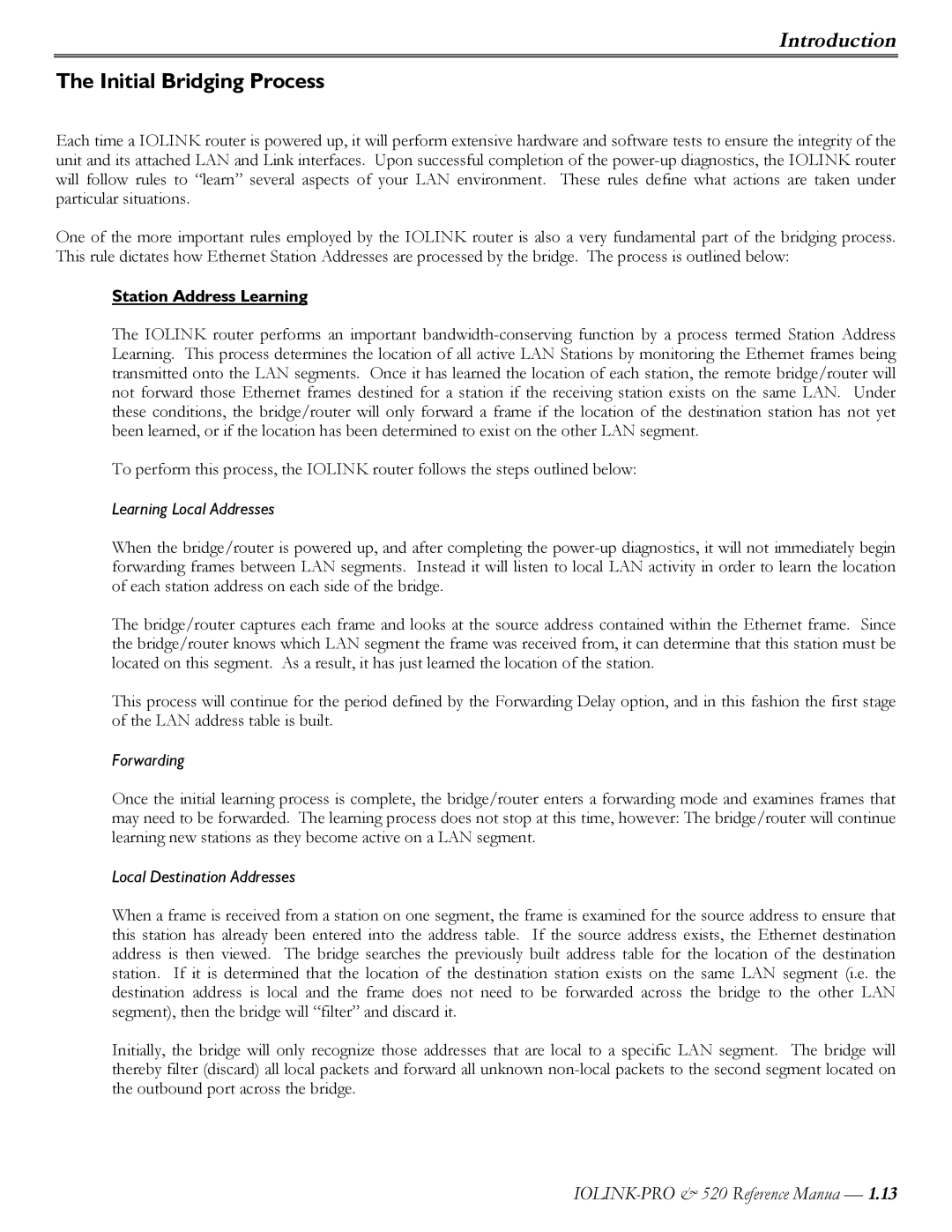Introduction
The Initial Bridging Process
Each time a IOLINK router is powered up, it will perform extensive hardware and software tests to ensure the integrity of the unit and its attached LAN and Link interfaces. Upon successful completion of the
One of the more important rules employed by the IOLINK router is also a very fundamental part of the bridging process. This rule dictates how Ethernet Station Addresses are processed by the bridge. The process is outlined below:
Station Address Learning
The IOLINK router performs an important
To perform this process, the IOLINK router follows the steps outlined below:
Learning Local Addresses
When the bridge/router is powered up, and after completing the
The bridge/router captures each frame and looks at the source address contained within the Ethernet frame. Since the bridge/router knows which LAN segment the frame was received from, it can determine that this station must be located on this segment. As a result, it has just learned the location of the station.
This process will continue for the period defined by the Forwarding Delay option, and in this fashion the first stage of the LAN address table is built.
Forwarding
Once the initial learning process is complete, the bridge/router enters a forwarding mode and examines frames that may need to be forwarded. The learning process does not stop at this time, however: The bridge/router will continue learning new stations as they become active on a LAN segment.
Local Destination Addresses
When a frame is received from a station on one segment, the frame is examined for the source address to ensure that this station has already been entered into the address table. If the source address exists, the Ethernet destination address is then viewed. The bridge searches the previously built address table for the location of the destination station. If it is determined that the location of the destination station exists on the same LAN segment (i.e. the destination address is local and the frame does not need to be forwarded across the bridge to the other LAN segment), then the bridge will “filter” and discard it.
Initially, the bridge will only recognize those addresses that are local to a specific LAN segment. The bridge will thereby filter (discard) all local packets and forward all unknown
